H(Curl) Hierarchical Shape Functions
When formulating Maxwell's equations with the magnetic vector potential as dependent variable, the differential equations include second order curl-curl derivatives, so that their integral weak form includes first order curl derivatives. Furthermore, a tangential continuity condition is imposed on the vector potential and a high accuracy on the derived differential fields is desirable. These problems require shape functions whose tangential component is continuous over the space domain and their curl is well-defined. Typical interpolation functions that satisfy these requirements are the H(Curl)-conforming hierarchical shape functions.
The form of the shape functions depends on the element topology and order. Simcenter STAR-CCM+ offers 2D and 3D lowest order Nédélec elements of the first kind [946].
| 2D Elements | |
|---|---|
Triangle
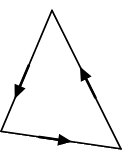 |
Quad
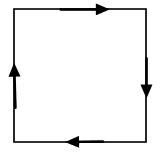 |
| 3D Elements | |||
|---|---|---|---|
Tetrahedron
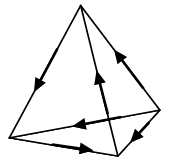 |
Wedge
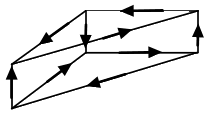 |
Hexahedron
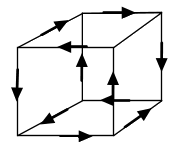 |
Pyramid
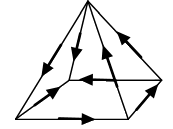 |
Consider an element with n edges. The distribution of a variable can be approximated by:
- the index identifies the element degrees of freedom
- is the -th scalar degree of freedom
- is a vector H(Curl)-conforming shape function, which determines the contribution of the scalar value to
- the degrees of freedom are located at the element edges
- the number of degrees of freedom coincides with the number of element edges
- the degree of freedom can be identified as the first moment of the tangential component over each edge: (4814)
where is the tangential vector along edge
- the shape functions have constant tangential trace on the edges of the element: (4815)
which yields the nodality of the basis.
The shape functions for tetrahedral elements are described below.
- Tetrahedron
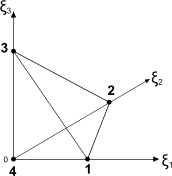
Higher-Order Shape Functions
When using a higher-order finite element method, further degrees of freedom (in addition to those used for the lowest-order scheme) are used to discretize the finite element space. The additional degrees of freedom are added in sequence to the edges, followed by the faces, and finally the cell interior.
The higher-order shape functions are formulated in a hierarchical manner, that is, the set of finite element shape functions for any element of order contains the set of shape functions for the element of order .
In this way, the shape functions for any higher-order element are built from the shape functions of the element of sequentially lowest-order. The lowest-order shape functions remain precisely as those described above. The coefficients of the polynomial from which the H(Curl)-conforming finite element shape functions are constructed are typically computed via a recursion formula [reflink].
where is the face normal.
- Degrees of freedom with generalized support points on edges
-
(4823)
- Degrees of freedom with generalized support points on faces
-
(4824)(4825)
- Degrees of freedom with generalized support points in the cell interior
-
(4826)
Local-to-Global Mapping
Shape Function Derivatives
The curl of the shape functions with respect to the deformed coordinates is given by:
where